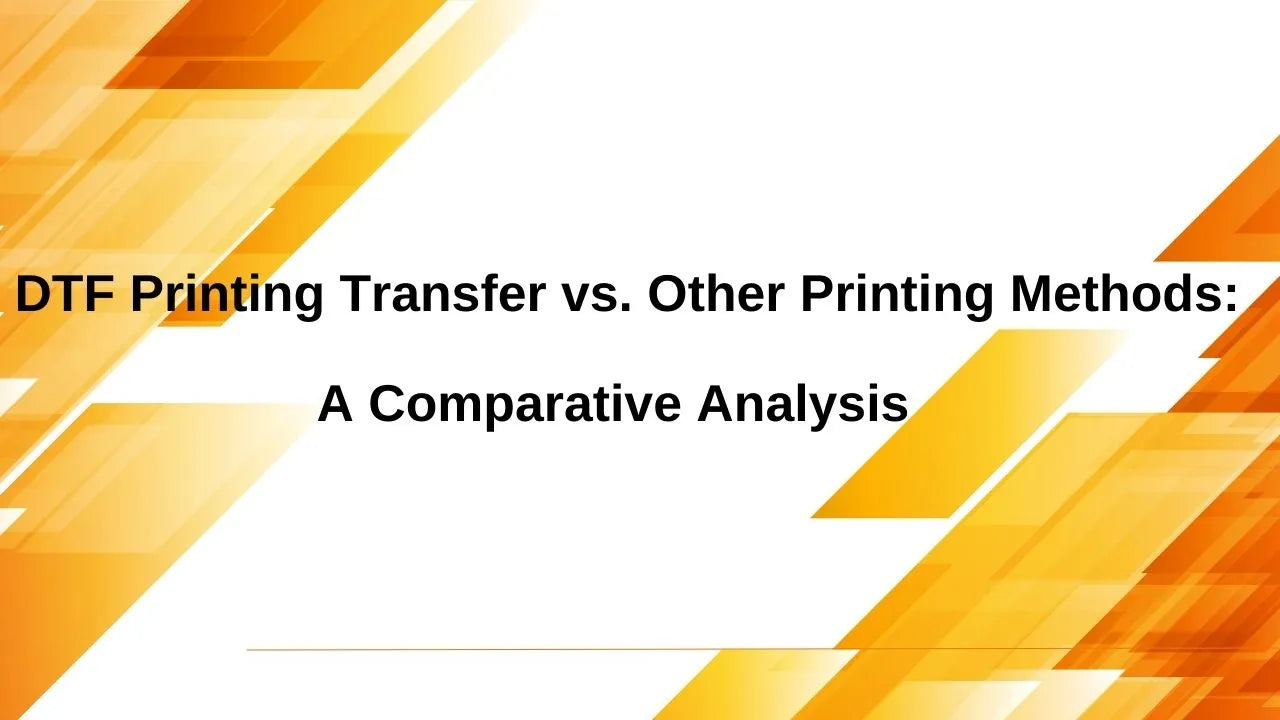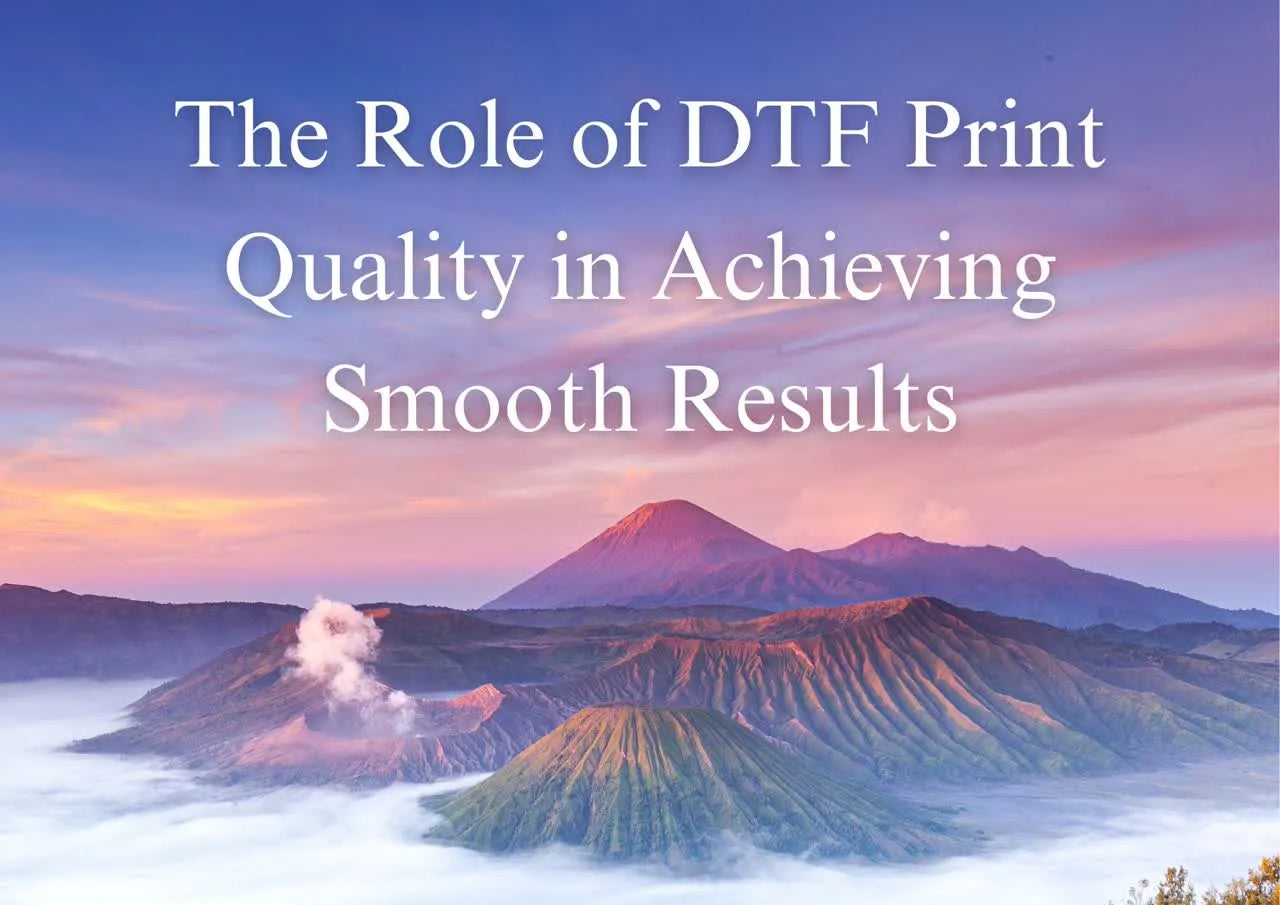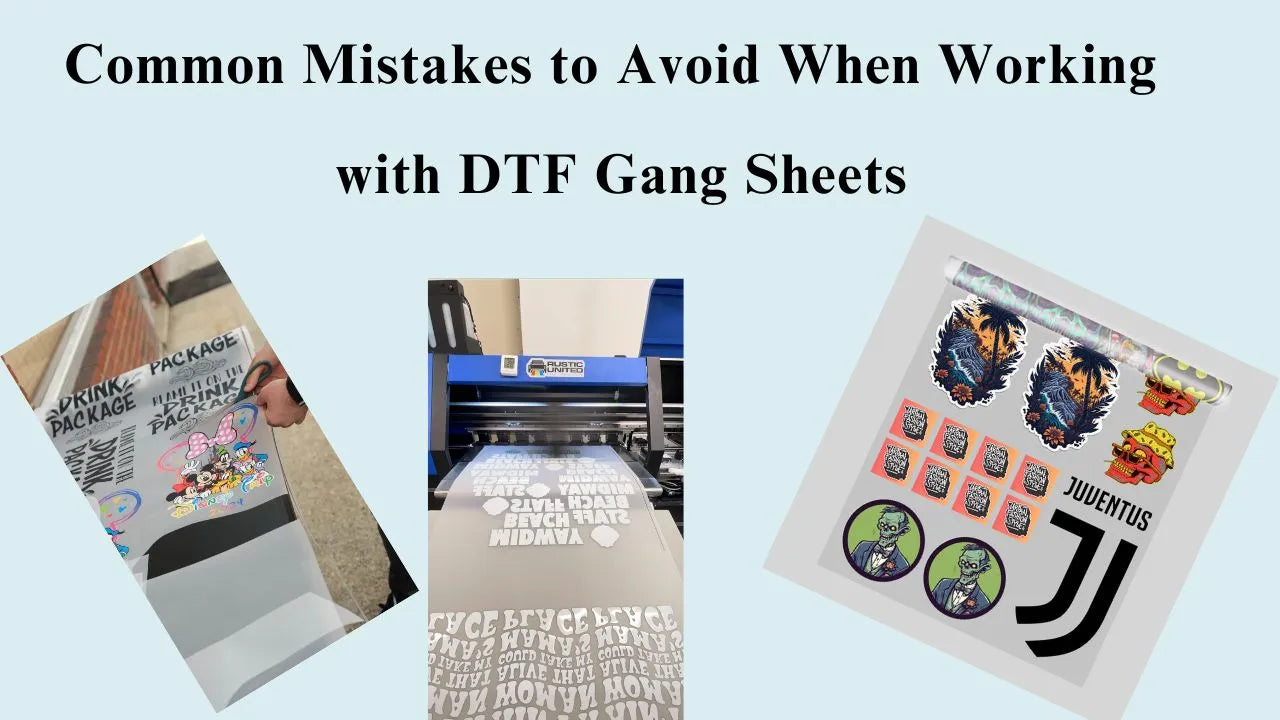
DTF Printing Transfer vs. Other Printing Methods: A Comparative Analysis
In the fast-paced print world, DTF printing is shaking things up. This method involves creating a design digitally and printing it on a special film. Then, the design is moved to fabric using adhesive and heat. This tech is proving itself with better prints, fitting many fabric types, and saving money.
Businesses and fans of making their own gear are looking into garment printing. They see DTF transfer as an exciting option. By checking how DTF stands up against screen printing, DTG printing, and heat transfer printing, we learn a lot. DTF stands out because it can help make top-notch, budget-friendly custom apparel.
Key Takeaways:
-
DTF printing offers superior print quality, with vibrant colors and intricate details.
-
The versatility of DTF allows it to work with a wide range of fabric types, including cotton, polyester, and blends.
-
While the initial setup costs for DTF may be higher, it can provide long-term cost savings, especially for high-volume printing.
-
DTF prints are known for their durability, maintaining color vibrancy and sharpness even after repeated washes.
-
DTF technology is becoming increasingly common and preferred in various industries, indicating its growing influence in the printing sector.
Introduction to DTF Printing
Definition and Overview of DTF Printing
DTF printing is a new tech game-changer. It prints a digital design onto a special film. Then, this design is moved to fabric using adhesive and heat. It is a popular method now for its many benefits over traditional ways.
Rise in Popularity and Demand
DTF printing's rise has been revolutionary. Today, there's a big need for quality, quick work, and being eco-friendly. This method meets all these needs. It comes with cost-efficiency, ease in printing, ability for mass production, durability, and top-notch results. These benefits have made DTF printing more wanted in the business world.
Overview of Traditional Printing Methods
The printing world is bustling with new tech, like DTF printing. Yet, some old ways stay strong, especially in decorating clothes. Screen printing, direct-to-garment (DTG) printing, and heat transfer printing are key. Each has its good points and bads, meeting various needs.
Screen Printing
Screen printing is a classic that's been around for ages in garment-making. It gains fans for its sturdy, bright prints. In this way, ink moves through a pattern onto the fabric, making fine details and vivid pictures. But remember, screen printing is not fast for small jobs and setting up takes time.
Direct-to-Garment (DTG) Printing
DTG printing, a digital way, has become more loved lately. It puts color right on the fabric, great for detailed designs and many colors. It fits well for unique items or small batches since it doesn't use screens. Yet, it might get pricey for lots of things.
Heat Transfer Printing
Heat transfer is simple and often used for t-shirts and such. With this, a design from a paper moves to the fabric with heat. It works fast for personal designs. Still, it might not last as well as the others.
Advantages of DTF Printing Transfer
DTF (Direct to Film) printing is changing the game in the print industry. It has top-notch DTF print quality, works with many fabrics, and is cost-effective. This makes it a top choice for businesses and creatives.
Superior Print Quality
DTF prints stand out with their bright colors and clear designs. They can print even the most detailed or colorful designs accurately. This brings your ideas to life with amazing DTF print quality.
Versatility in Fabric Types
DTF printing isn't picky about fabrics. It works well with cotton, polyester, or mixed materials. This makes it very versatile DTF printing for various DTF compatible materials.
Cost-effectiveness
Cost is crucial for businesses, and DTF printing is a smart choice. It's cheaper than methods like screen printing, especially for smaller orders. DTF's quick setup and cleanup save time and money, making it a wise DTF printing cost savings option.
Comparison with Other Printing Methods
Compared to DTG, screen printing, or heat transfer, DTF printing is quite strong. DTG is slower and more expensive for big orders. Screen printing needs more money to set up and isn't as flexible with materials. While heat transfer printing has its uses, it doesn't last or look as good as DTF printing.
|
Printing Method |
Advantages of DTF Printing |
|---|---|
|
DTG Printing |
|
|
Screen Printing |
|
|
Heat Transfer Printing |
|
In the dynamic realm of printing, DTF printing is making a name for itself. It's changing the game with its lower costs, ability to print on many materials, and great quality. This method is friendly to both business wallets and the environment. It's shifting how companies think about adding designs to their products.
DTF Printing Transfer vs. Inkjet Transfer Paper
Businesses and folks diving into custom clothing have to pick between DTF (Direct to Film) and inkjet transfer paper. Each method has its unique benefits. We’re going to look at what stands out for each.
Cost-Effectiveness Comparison
Inkjet transfer paper is cheap to start with. You just need the paper and ink. But DTF transfers need more at first, like a special printer and film. You also need a powder adhesive and inks [what are the inks used for?]. Over time, DTF can save you money, especially for a lot of shirts. Each print costs less.
Durability and Longevity
DTF prints are super durable. They keep their color and sharpness wash after wash. In comparison, inkjet prints might not last as long. They can look old faster, with designs that crack or fade if not taken care of properly.
Aesthetic and Feel
DTF prints have a soft touch, making them feel nice to wear. They keep colors and details bright on different fabrics. But inkjet prints can feel stiff, especially where the design is. This might affect how comfy and flexible the clothing is [what does this mean for the clothes?].
Ease of Use and Learning Curve
Both the DTF printing process and inkjet transfer paper printing process have pros and cons. The inkjet method is easier for beginners. But it may not be the best for complex projects. The DTF method is a bit harder to start with but offers more features and quality over time.
Step-by-Step Process Comparison
The inkjet transfer paper printing process starts by printing a design on special paper. Then, you use a heat press to put it on the fabric. This way is simple, making it a top choice for new printers. The DTF process needs more gear and know-how, like a special printer and certain materials. Once you get the hang of it, the DTF way can be as quick and effective as the inkjet way.
Potential Challenges and Solutions
Learning any new technique takes time, including the DTF and inkjet transfer paper printing. Inkjet seems easier at first, but DTF can offer more once you get skilled. Picking the right method depends on your goals and the quality you want for your work.
Getting good at the DTF process means doing some extra learning and testing with your tools. But, by putting in the effort and staying open to learning, you can enjoy DTF's high-quality prints and value for money. Versatility and Diverse Applications.The uses of DTF printing go beyond just T-shirts. This tech is great for printing on materials like hoodies, hats, and even tough surfaces. It opens up new doors for people who love DIY and for businesses. They can now create a whole variety of DTF printing applications, stretching way beyond just shirts.
Think about making custom headwear, pillows, curtains, or even branding materials like bags. The options are limitless with DTF printing. Businesses can make their brand stand out with products that are both colorful and durable.
DTF printing is also perfect for crafters and those into DIY. They can craft unique gifts, art, or even start a small business with affordable but high-quality printing. It truly changes the game, not just for T-shirts but in all kinds of creative ways.
Tips and Recommended Tools for DTF Printing Transfer
Exploring DTF (Direct to Film) printing? You need top advice and the right gear for great prints. These insights will assist both seasoned printers and beginners. They make the journey easier and more successful.
Best Practices for First-Time Users
Starting out? First, play around with various designs and fabrics. This practice teaches you a lot about how DTF printing works. Always check your film and prints for bugs before transferring. A speck of dust can spoil your final work.
Perfecting heat press settings is key. Stick to your machine's guidelines, but don't be afraid to tweak. This adjusts to your unique setup.
Essential Equipment and Supplies
Turning a corner of your home into a DTF printing hub is quite affordable. You mainly need a special printer, DTF film, adhesive, and inks. Gathering these tools and materials is crucial for a positive DTF printing journey.
|
Equipment |
Cost Range |
|---|---|
|
DTF Printer |
$1,000 - $5,000 |
|
DTF Film |
$50/roll |
|
Heat Press |
$200 |
|
Adhesive Powder |
$20/pound |
|
Ink |
$50/gallon |
With these DTF printing tips, plus the right DTF printing equipment and supplies, you're set to make top-notch DTF prints. Your clients will love the quality and style of your custom wear.
Case Studies and Success Stories
Businesses all over the world love DTF printing. They've seen a big drop in how long it takes to make things and how much it costs. Plus, their customers are happier with the better product quality. Thanks to these benefits, DTF is changing how all kinds of companies manage their printing.
Take the Custom Tee Factory. By using DTF transfer printing, they slashed their production time by 60%. This move also helped them offer more variety in their products. Meanwhile, private label companies found that DTF printing led to a big rise in sales. This growth let them reach out with new brands and products.
A special niche fitness gear private label company is also making waves in their market. They are now well-known for their fitness wear, have loyal customers, and are growing their line of products. These real-world uses of DTF printing underline its power to make businesses succeed.
|
Company |
Impact of DTF Printing |
|---|---|
|
Custom Tee Factory |
60% reduction in production time, allowing for expanded product range |
|
Private Label Businesses |
Significant increase in sales, enabling brand and product line expansion |
|
Niche Fitness Gear Business |
Became a prominent player in the fitness apparel market with a loyal customer base and growing product range |
Conclusion
After looking at the facts closely, it's clear that DTF transfers are the top choice for making custom T-shirts. They offer the best mix of quality, durability, cost-effectiveness, and user-friendliness. This makes them perfect for anyone making DIY shirts or businesses looking for a reliable method.
DTF printing has many advantages, like strong prints that last, work well on different fabrics, and are affordable. This makes it a great choice for making custom clothes. The prints come out with vivid colors, detailed designs, and they endure a long time. Plus, using DTF is easy because of the new printing tech.
The future of DTF looks very promising. It seems poised to change how we make and wear custom clothes. Its eco-friendly process, efficient way of working, and great outcomes are impressive. DTF could really win over people who love custom apparel.


Leave a comment
This site is protected by hCaptcha and the hCaptcha Privacy Policy and Terms of Service apply.